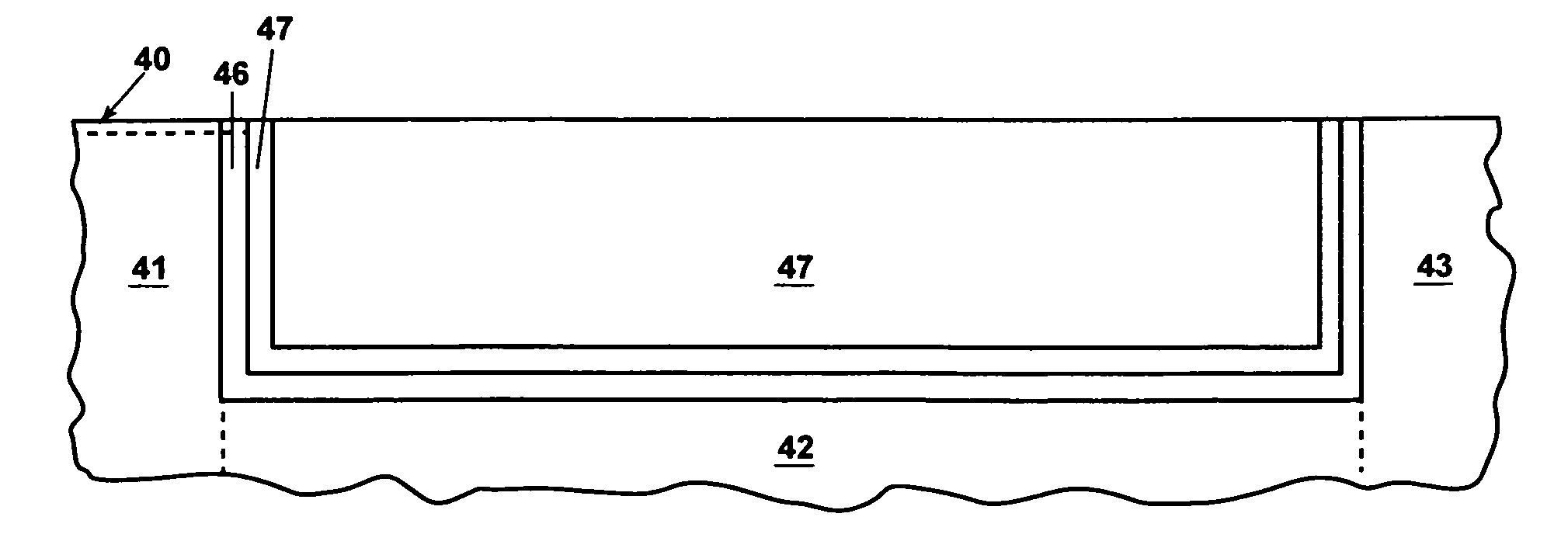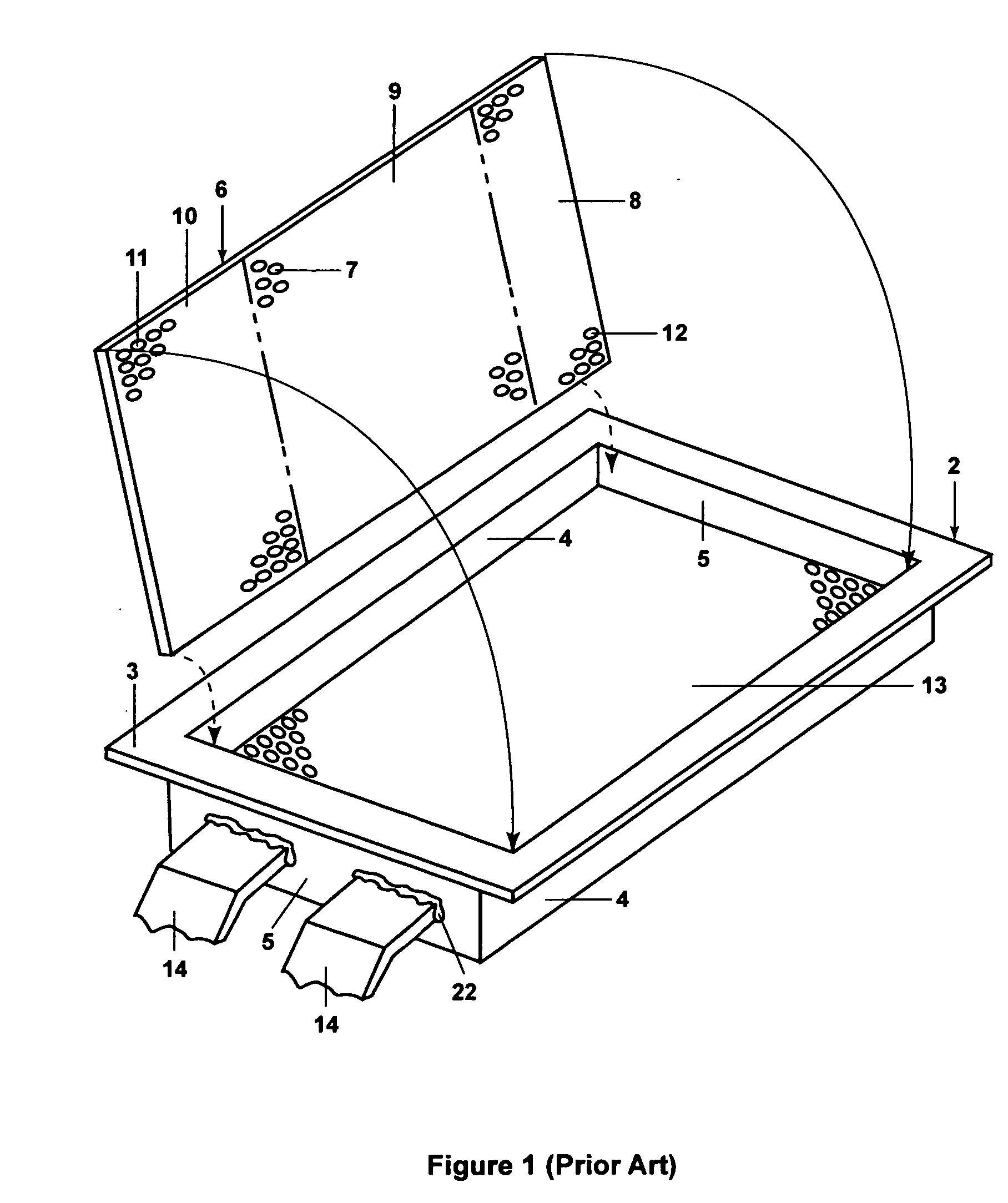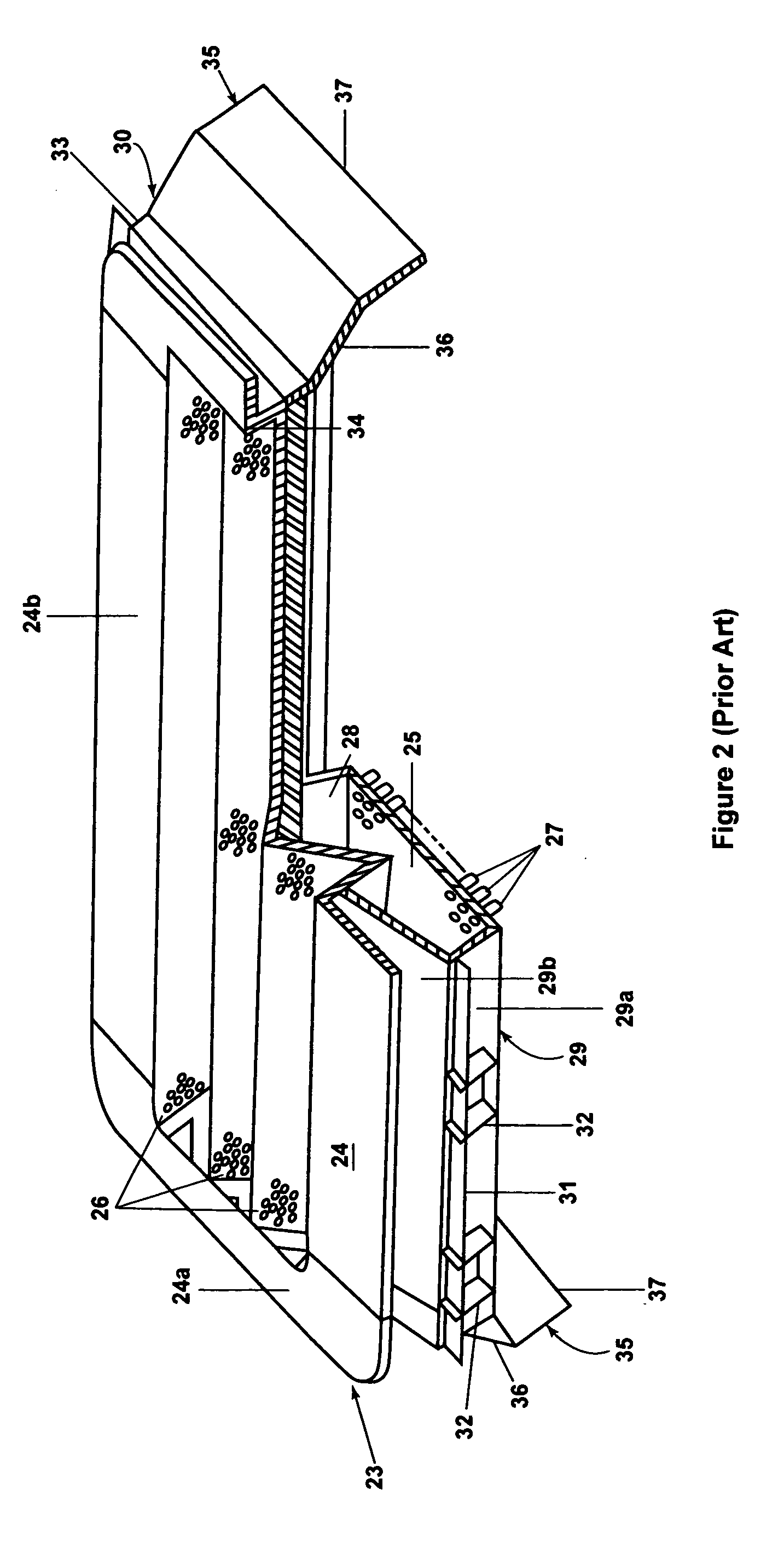High hot creep resistant alloys, parts, systems and methods
a technology of high hot creep and alloys, applied in the field of high hot creep resistant alloys, parts, systems and methods, can solve the problems of determining the reducing the potential life of the bushing, and limited availability, so as to reduce the time-consuming annealing steps, reduce the cost, and increase the fiberizing efficiency
- Summary
- Abstract
- Description
- Claims
- Application Information
AI Technical Summary
Benefits of technology
Problems solved by technology
Method used
Image
Examples
Embodiment Construction
[0051]FIG. 1 is a perspective view of a prior art glass fiberizing bushing, a bushing Shown and described in U.S. Pat. No. 7,194,874, the disclosure of which is hereby incorporated herein by reference. Such a bushing is typically made of a precious metal alloy of about 80 wt. % Pt and about 20 wt. % Rh. This bushing receives molten glass from a forehearth and forms fibers from thousands of tips that are rapidly pulled away from the bushing and attenuated while hot and plastic to various desired diameters as known. This bushing 2 is comprised of a flange 3 that butts against a bottom of a flow block in the forehearth, two opposed sidewalls 4 and two opposed end walls 5, a screen 6 (shown unattached here) having spaced apart holes 7 to catch any pieces of refractory carried by the glass flow and also to mix and homognize the molten glass. The screen 6 can have uniform diameter holes 7 evenly spaced apart in the screen (see FIG. 2) or can, as shown here, have sections 8, 9 and 10 with ...
PUM
| Property | Measurement | Unit |
|---|---|---|
| thick | aaaaa | aaaaa |
| hot creep resistance | aaaaa | aaaaa |
| temperatures | aaaaa | aaaaa |
Abstract
Description
Claims
Application Information
 Login to View More
Login to View More - R&D
- Intellectual Property
- Life Sciences
- Materials
- Tech Scout
- Unparalleled Data Quality
- Higher Quality Content
- 60% Fewer Hallucinations
Browse by: Latest US Patents, China's latest patents, Technical Efficacy Thesaurus, Application Domain, Technology Topic, Popular Technical Reports.
© 2025 PatSnap. All rights reserved.Legal|Privacy policy|Modern Slavery Act Transparency Statement|Sitemap|About US| Contact US: help@patsnap.com



